1927 Buick Master six **Model 27-50 (not 60) 7-Passenger
- Make: Buick
- Model: Series 60
- Year: 1927
- Mileage: 20,000
- Color: Blue
- Engine size: 6 cyl
- Number of cylinders: 6
- Fuel: Gasoline
- Drive type: RWD
- Interior color: Gray
- Drive side: Left-hand drive
- Vehicle Title: Clear
- Location: Hendersonville, Tennessee, United States
Description
The Buick Master Six was an automobile built by Buick from 1925 to 1928. Before then, Buick was using the 6 cylinder 242 engine in their high-end cars and a 4-cylinder engine in their smaller, less-expensive cars, but for 1925 they dropped the 4 cylinder engine and designed a small 6, which they called the Standard 6, to replace that end of the market. They coined the name "Master Six" for the high-end cars, now powered by the 255 engine released the year before.
Very nice older restoration. Very, very solid and clean car. The underside is unbeleivable nice. Very original car. Upgraded to modern downdraft carburetor, and modern distributor for ease of operation and maintenance. 6-volt optima battery. Driven to car shows and parades. Selling because garage is full and I want to buy some different toys. I will assist with loading this vehicle onto transporter for seller.
Buick named their 6-cylinder cars "Buick 6" from 1916 through 1924, and in 1925 divided them into Standard 6 and Master 6[1]. All were powered by a Buick Straight-6 engine, with multiple body styles. Although Buick produced mostly 4 cylinder cars in the teens and early-20s, as it had been doing, the new six cylinder cars became more and more common. Buick first made 6 cylinder cars, in 1914, with a 331 cubic inch engine, which was originally a racing engine, later used in limited production as the Series 50. The 331 engine was dropped in 1916 and replaced with the much smaller 40 series engine, starting with a 224 cubic inch in 1916 and 1917, the 242 engine from 1918, increased to 255 in 1924, increased again to 274 for 1926 through 1928. The engine was increased again to 309 for the Series 121 and 129 in 1929 and Series 40 in 1930, after which all 6 cylinder engines were suddenly dropped and all models of Buick were equipped with the legendary Straight 8, starting in 1931 and for decades thereafter.
The Master Six was Buick's high-end offering, above the Standard Six. It was also manufactured from knock-down kits at GM's short-lived Japanese factory at Osaka Assembly in Osaka, Japan. It was an all-new platform joining the smaller Model 10, and was replaced by the Buick Series 50, and the Buick Series 60.
Starting in 1916, when this generation was introduced, different models were known by a designation that changed yearly. It began as the Series D in 1916, followed by E in 1918, H in 1919, and K in 1920. Beginning with 1921 until 1924, it changed to Series 21, denoting the year, to Series 24 (for 1924). Beginning with the letter designations, the Series D had additional numeric designations for the body style, 44, 45, 46, and 47, designating touring car, roadster, sedan, and coupe. The Series E, H, and K continued using the numeric designations for body styles but added additional designations for longer wheelbases and bodywork (44, 45, 46, 47, 49, 50). The numbered series vehicles added additional body styles called Pullman Saloon, Country Club, and Town Car, adding numeric designations (54, and 55 for 1922, 41 for 1923). The year 1924 continued to use the previous numeric designations without any changes.
Starting with 1925, the series designation changed back to numeric designations, but this time they signified the wheelbase used (120, 121 and 129).
see running at: https://youtu.be/8fkjxV_RxDc orhttps://youtu.be/UsWGRJKYcAQ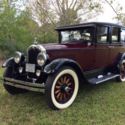 1926 Buick Model 26-47 Master series seven passenger Sedan.
1926 Buick Model 26-47 Master series seven passenger Sedan.
Mileage: 54412
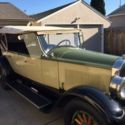 1927 Buick Sport Touring Car Master Series Model 27/55 Convertible
1927 Buick Sport Touring Car Master Series Model 27/55 Convertible
Mileage: 657450
 1927 Buick Master Six Brougham
1927 Buick Master Six Brougham
Mileage: 80,000
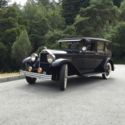 1928 Buick Master seven passenger Town Sedan
1928 Buick Master seven passenger Town Sedan
Mileage: 9999999
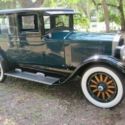 1927 BUICK SEDAN MODEL 120
1927 BUICK SEDAN MODEL 120
Mileage: 39107
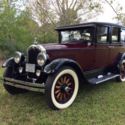 1926 Buick Model 26-47 Master series Sedan.
1926 Buick Model 26-47 Master series Sedan.
Mileage: 54412
 1925 Buick Master 6 Model 47. Restored to admiration
1925 Buick Master 6 Model 47. Restored to admiration
Mileage: 999999999
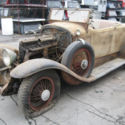 1929 Buick , Model 44 , 121 series, 4 passenger , Sport Roadster
1929 Buick , Model 44 , 121 series, 4 passenger , Sport Roadster
Mileage: 99,999
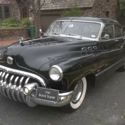 1950 Buick Super, Model 52, 4 dr. 6 passenger Sedan, "126" Straight 8
1950 Buick Super, Model 52, 4 dr. 6 passenger Sedan, "126" Straight 8
Mileage: 55549
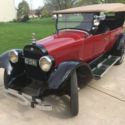 1923 Buick Six Series 23 Model 45 Phaeton 5-Passenger 6 Cylinder
1923 Buick Six Series 23 Model 45 Phaeton 5-Passenger 6 Cylinder
Mileage: 6119












